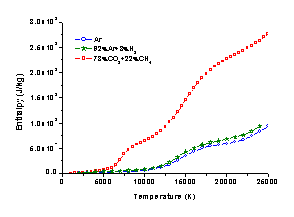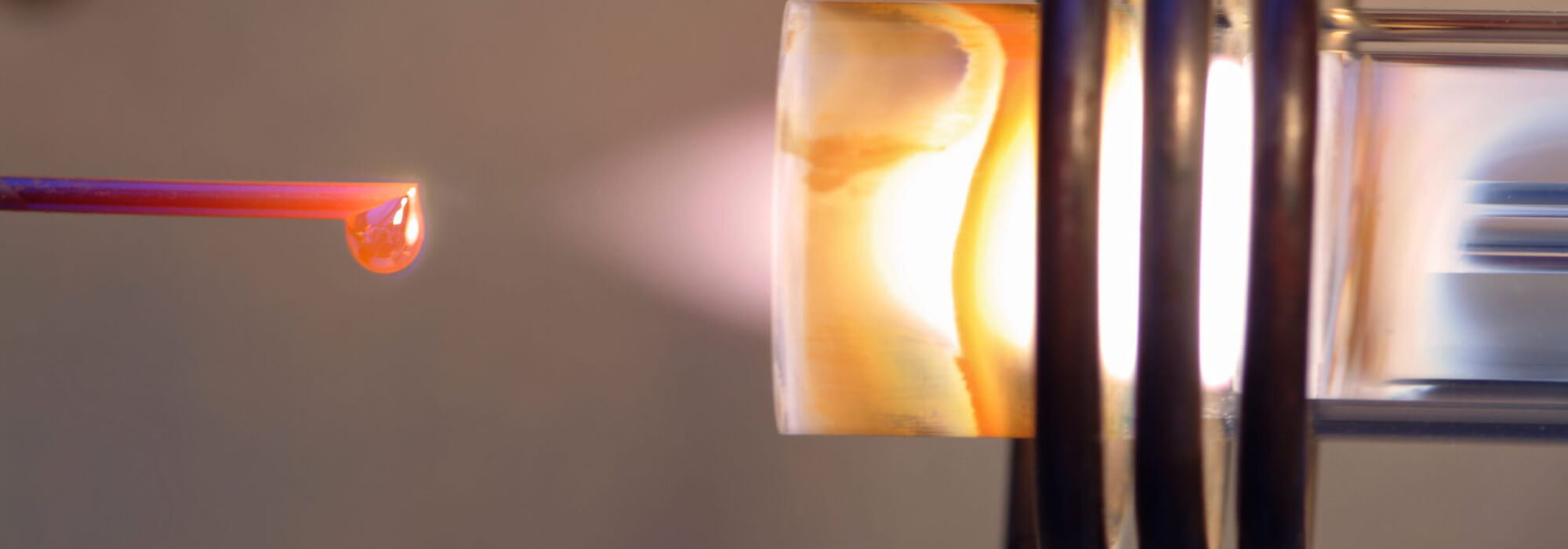Process Development
A New Combustion-based High Pressure Warm Spray System
- Libing Jia
High velocity oxy-fuel (HVOF) spraying is a thermal spraying technique whereby powder material is heated and propelled by high velocity combusted gases towards a surface to form a coating. Because of the high kinetic energy experienced by the impinging particles, the coatings produced with the HVOF system exhibit the highest bond strengths and lowest porosity compared to other conventional thermal spraying processes. However, overheating of particles and substrate by the high temperature flame can result in higher oxidation and/or higher decomposition of coating materials.
In recent years, increasing attention has be given to cold gas dynamic spraying (CGDS), a technique to spray very fine powder by a supersonic jet at a temperature considerably lower ( To allow spraying of the most popular commercial Ni, Co, Fe-alloys and cemented carbides with high deposition efficiency and low oxide content, the industry has been looking for a high velocity spraying method working at a temperature somewhere between cold spray and HVOF. With the aims to regulate gas stream temperature for best coating results and increased flexibility of a coating system, a new combustion-based high pressure spray device was built. Temperature regulation is achieved by mixing combustion products with cold nitrogen in a mixing chamber. The warm gas mixture is then forced through a Laval nozzle to generate a supersonic flow for particle acceleration and heating. The chamber pressure is up to 1.5 MPa, and temperature of the gas mixture can be regulated between 1000-2500K. With the new device, fine powder materials can be accelerated to high velocities while having moderate temperatures.
Future work includes characterization of the coatings produced with the new device and optimization of operating conditions for specific coating material.
Study of high power plasma torch with CO2+CH4 as working gases
- Liming Chen
Industrial types of direct current plasma torches usually use argon for plasma generation. Necessity of argon use dictates by its inertness at high temperatures to tungsten, main material for the torch thermionic cathode. Low thermal conductivity and enthalpy of argon, however, limit the thermal efficiency of these torches. To overcome this shortcoming, a secondary gas is mixed with argon. Hydrogen, helium or nitrogen are most commonly used secondary gases. Introduction of these gases increases the thermal conductivity. In addition, molecular gases must dissociate before ionization. Thus, it requires larger energy input resulting in an increase in enthalpy of the plasma.
Molecular gases such as air, nitrogen are used extensively for plasma generation in waste incineration, steel making, and metal cutting industries. Use of carbon contained gas mixtures has also been reported. The latest, in particular carbon dioxide-hydrocarbons mixture has a number of advantages, compared with Ar and Ar-H2, the enthalpy and thermal conductivity of the CO2+CH4 mixture is much higher (see Fig. 1), leading to higher torch power and improved heat transfer to sprayed particles. Additionally, when carbon ionizes at the arc conditions it forms an ionic current toward the cathode, and deposits on the cathode surface, forming an emitting surface of the cathode. When a dynamic equilibrium between carbon losses (due to sublimation) and precipitation is attained, a virtually nonconsumable graphite cathode is formed, which solves the erosion problem of conventional tungsten cathode.
Experimental results show that using molecular gases CH4+CO2 can effectively increase torch power and voltage due to high enthalpy of molecular gases. Typical arc voltages are 30-35V for Ar, 40-95V for Ar+H2, and 125-170V for CO2+CH4. The thermal efficiency of the torch is within 10-30% for Ar and Ar+H2, and 55-80% for CO2+CH4. It is found that molecular gases significantly increase heat transfer to the particles. Measurements of temperature and velocity of YSZ particles demonstrates that at the same spray distance particles temperatures are higher up to 400C in CO2+CH4 mixture than in Ar+H2 mixture.

Fig. 1: Properties of Ar, Ar+H2 and CH4+CO2
(a) Thermal conductivity

Fig. 1: Properties of Ar, Ar+H2 and CH4+CO2
(b) Enthalpy
To further improve arc voltage and torch power, a cascaded cathode can be used instead of the conventional single-piece anode. Using cascaded cathode can effectively increase arc length, thus enhance the arc voltage and torch power. Experiments show that cascaded torch increases power by up to 170% over conventional torch with argon as working gas, and 35% with CO2+CH4 as working gas.
The aim of this project is to design a high power plasma torch with CO2+CH4 as working gases, and study its performance. The main work includes design and optimization of graphite cathode, conventional anode, and cascaded anode; measuring in-flight particle conditions, and testing sprayed coating properties. The modeling work includes calculating thermodynamic and transport properties of CO2+CH4 mixture, simulating plasma flow inside plasma torch, and establishing near cathode region model to calculate the ion flux toward the cathode.
Turbulent Interfacial flows
- Hanif Montazeri
The effect of turbulence on the interface characteristics is a controversial issue which has attracted many researchers to study this subject. Many aspects of the turbulent flows and the transport mechanisms, e.g. generation and interaction processes at the interface and its roles are unexplained. Turbulence is highly anisotropic at the interface, due to the surface tension and gravity forces [Weber and Froude numbers]. Surface deformation and vortices near the free surface generate vorticities normal to the free surface. Moving boundary, existence of vorticity normal to the interface, complicated and rapid deformation, ligament formation, breakup and merging of the interface are some aspects of turbulent interfacial flows that make this type of flows different from the other turbulent flows.
To establish a proper research, experimental and analytical studies need to be conducted. For simple cases of interfacial flows, there are numerous papers explaining experimental evidences of this type of flow. In terms of analytical investigation, there are few papers in which some techniques were presented. However, using these analytical techniques needs some numerical tools. Numerical simulation, on the other hand, lacks accuracy and is inconsistent in many aspects. This research is an attempt to accomplish an extensive research using different available methods to develop a reliable numerical simulation for simple interfacial flows. To this end, Large Eddy Simulation is considered as an accurate enough turbulent-capturing tool and the Level Set method is used to capture interface.


